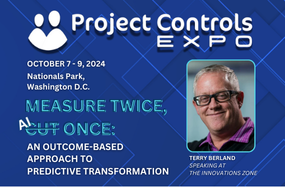
The Hidden Problem with Hybrid Cloud—And How to Fix It

Hybrid cloud has become the de facto model for capital project delivery. On paper, it promises flexibility. In practice, it often delivers complexity—especially in capital project environments where performance, uptime, and compliance can’t be left to chance.
It’s not that hybrid cloud is flawed—81% of AEC firms already operate in a hybrid cloud environment, and Gartner expects that number to hit 90% by 2027—it’s just incomplete—particularly when managed as patchwork. Most organizations didn’t choose hybrid cloud intentionally; it happened organically. Legacy systems stayed on-prem. New tools were deployed in the cloud. And the result? A sprawling infrastructure that’s hard to govern, even harder to optimize.
This is the reality for most capital project teams today.
Hybrid Cloud, Fragmented Reality
At its best, hybrid cloud lets you run the right workload in the right environment. But in reality, it often means data and applications scattered across disconnected platforms: on-prem databases, private cloud analytics, cloud-native tools, and countless integrations between them.
You might have P6 running locally, dashboards in Power BI, forecasting models in Excel, and data pipelines moving between systems with little coordination. Each system may be valuable. But together, they often create a fragmented reality—one where reporting is slow, decisions are delayed, and innovation is throttled.
This is the burden of unmanaged hybrid cloud.
Hybrid Cloud Needs a Front Door
While hybrid cloud is the reality of enterprise IT in AEC and capital project delivery, it still depends on you—the customer—to integrate, secure, and manage everything. That means your IT team is left juggling multiple interfaces, SLAs, compliance frameworks, and support paths.
That’s counterproductive. What’s missing is a single, intelligent system—a front door—where governance, visibility, and performance converge. Hybrid cloud only delivers value when it operates as a system, not a series of parts.
A Smarter Approach: Unified Hybrid Cloud Management
Instead of adding another layer of complexity or expecting internal teams to stitch systems together, capital project leaders need a centralized control point. A single pane of glass for running, managing, and integrating all your project-related applications and data, no matter where they physically reside.
Why This Model Works
This isn’t about adding yet another hosting provider. It’s about enabling a purpose-built solution that eliminates the silos, bloated costs, and compliance risks that come with ad hoc hybrid cloud environments.
When done right, this kind of architecture provides:
- Centralized oversight of all applications, data, and users—whether hosted on-prem, in private environments, or in the public cloud
- Unified data operations that automate extraction, loading, cleaning, transformation, and alignment across tools like P6, Powerproject, EcoSys, and more
- Built-in security and compliance frameworks tailored to the regulatory demands of infrastructure projects
- Faster, AI-ready insights with natural language query capabilities and integrated reporting
Done right, hybrid cloud becomes not just a delivery model but a business advantage.
The Payoff
Organizations that adopt unified hybrid cloud management report significant improvements in efficiency, cost, and performance:
- Up to 40% reduction in total cost of ownership (Accenture)
- 68% lower operational costs (IBM)
- 65% faster time to market (IBM)
- 94% better security posture (Salesforce)
For IT leaders, it means fewer firefights and more strategic progress. For project teams, it means faster, more informed decisions—and fewer delays.
Hybrid Cloud Doesn’t Have to Mean Hybrid Headaches
The hybrid model is here to stay. But if left unmanaged, it becomes a source of frustration, not flexibility.
LoadSpring gives you a better way to manage hybrid cloud—one built around simplicity, security, and strategic control. With everything in one place, you can finally see clearly, act quickly, and move your projects forward with confidence.
Start managing hybrid cloud the smart way. Talk to an expert








